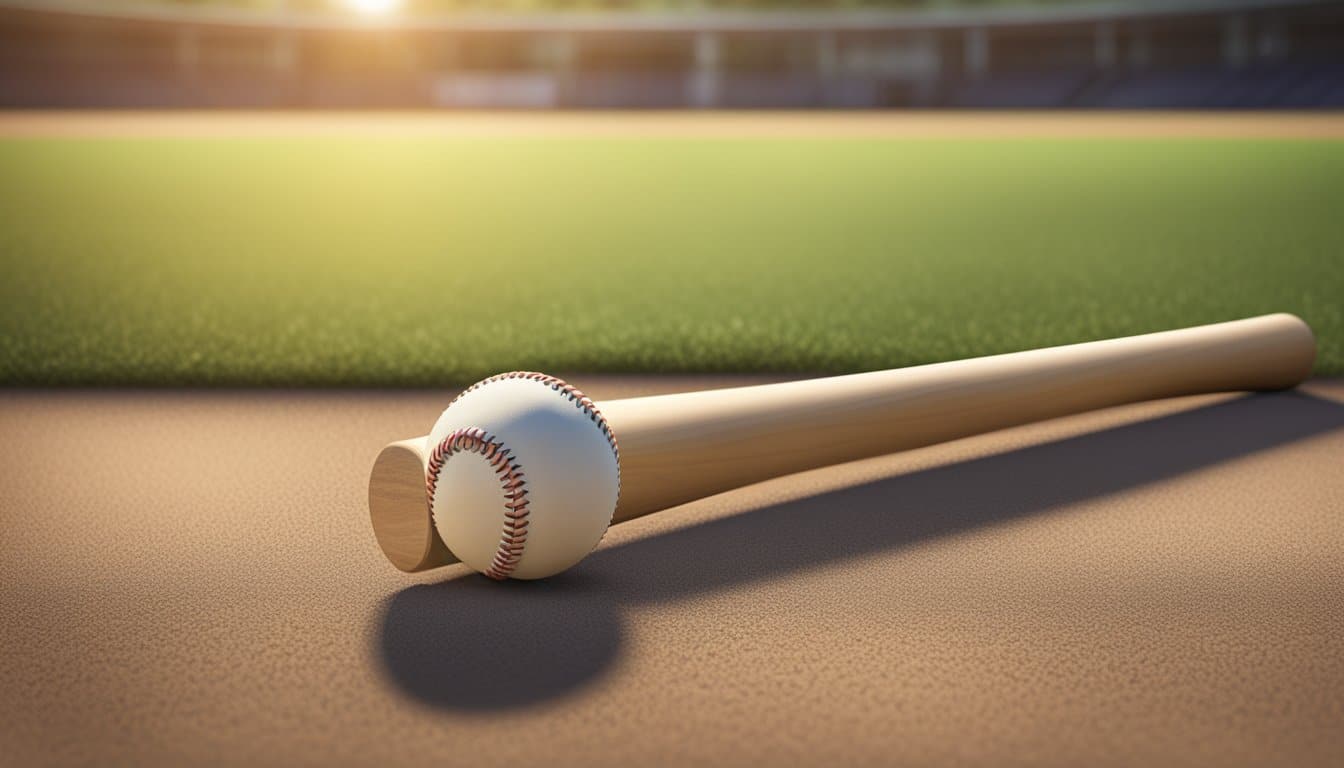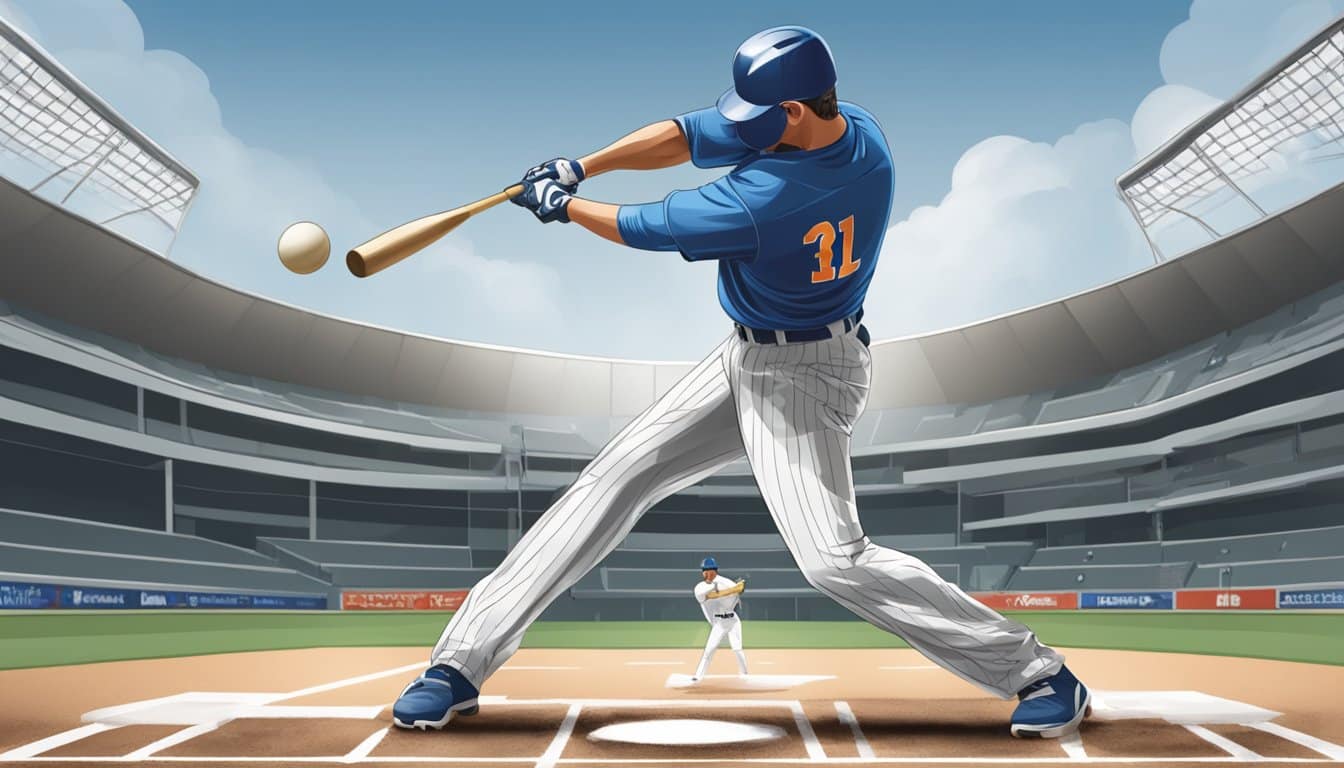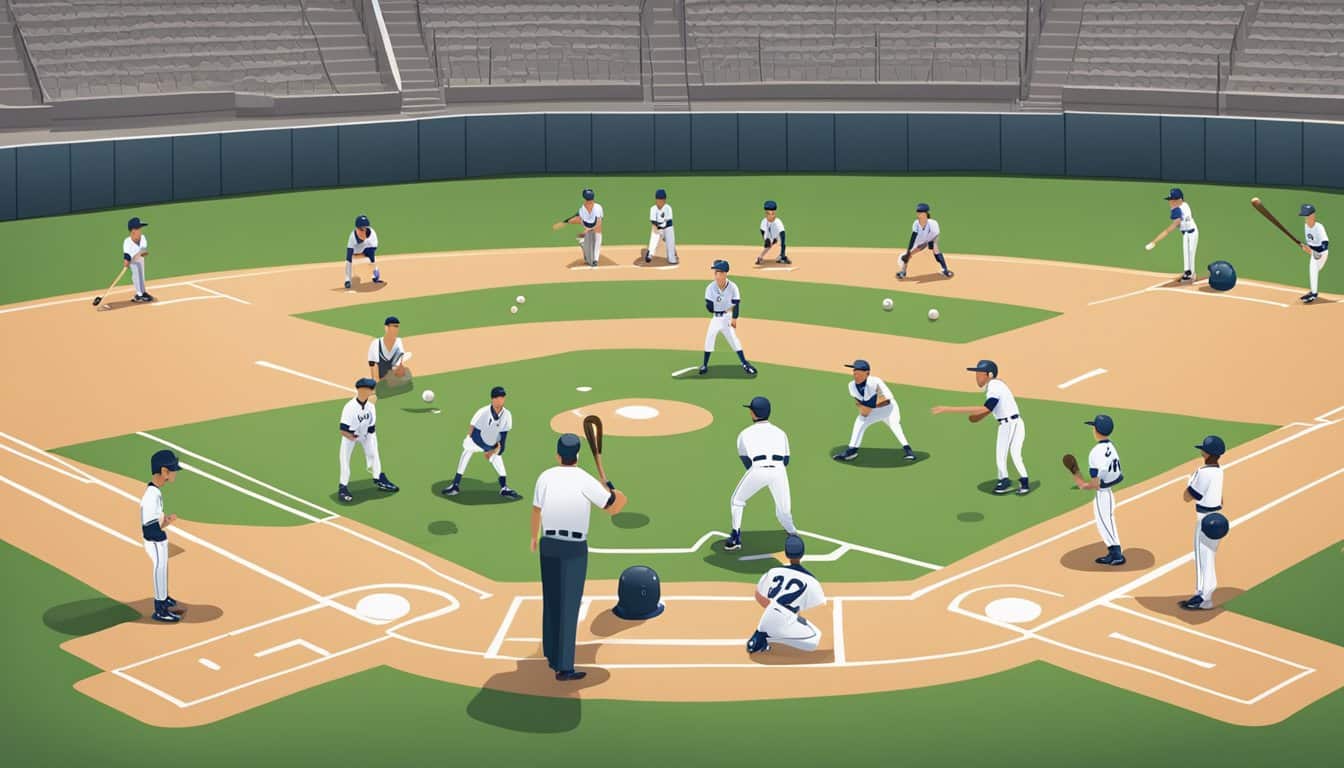Owning a personal batting tee can be a game-changer for baseball and softball players aiming to improve their hitting skills. It allows for consistent practice, enabling batters to refine their swing mechanics without the need for a pitcher. Whether in the backyard, garage, or on the field, a batting tee is a versatile tool that offers the opportunity for repetitive hitting practice, which is vital for muscle memory and improving bat path and contact point.
Batting tees are also indispensable for drilling into specific techniques and targeting areas of weakness. They provide immediate feedback, as players can analyze and adjust their swing in real-time. Incorporating a batting tee into a regular practice routine can significantly enhance a player’s ability to hit the ball with more power and accuracy, ultimately leading to better performance in games.
Key Takeaways
- A batting tee enables consistent, independent practice to refine hitting skills.
- It allows for focused technique improvement and adjustment of swings in real-time.
- Regular use integrates into practice routines, enhancing performance outcomes.
Understanding Batting Tees
https://www.youtube.com/watch?v=ELo4zAOKTkg&embed=true
Batting tees are fundamental tools for baseball and softball players, offering a stable platform for practicing hitting without the need for a pitcher. This section explores various types and factors essential in selecting the right batting tee.
Types of Batting Tees
-
Standard Tees: These tees have a base, a vertical stem, and a flexible top where the ball sits. They are widely used across different skill levels.
-
Tanner Tees: A specific brand known for durable construction and an easily adjustable stem that allows hitters to practice swings at various heights.
-
Portable Tees: Designed for ease of transportation, portable tees often feature collapsible designs and are light enough to carry to different practice locations.
-
Home Plate Tees: These tees are designed to mimic the actual home plate’s size and shape, providing a realistic training experience for players.
Selecting the Right Batting Tee
-
Material: Options range from rubber to high-grade steel. A tee’s lifespan can greatly depend on the materials from which it is made.
-
Adjustability: A good batting tee should have a wide range of height adjustments to accommodate various strike zone heights and player sizes.
-
Base Design: Stability is key; a wide or weighted base can prevent tipping during practice sessions.
-
Portability: For those who travel between fields or need to store the tee frequently, collapsible and lightweight designs offer convenience.
-
Skill Level: Beginners might opt for basic models, while advanced players may seek tees that offer more features for a versatile practice session.
The Role of Batting Tees in Skill Development
https://www.youtube.com/watch?v=nDZImvVFHvg&embed=true
A personal batting tee is a crucial tool for baseball and softball players focusing on consistent hitting. It targets specific skill areas vital for optimal performance.
Building Muscle Memory
When players repeatedly practice their swing on a batting tee, they build muscle memory. This repetition ingrains the motion into their muscles, creating a consistent swing. It allows batters to react instinctively during a game, reducing the time needed to think about swing mechanics.
Enhancing Swing Mechanics
A batting tee provides a static, predictable point allowing players to fine-tune their swing mechanics. Hitters can adjust their stance, bat path, and swing plane without the variable of pitch speed and location. This methodical approach leads to improvements in bat speed and swing path, crucial for effective hitting.
Improving Hand-Eye Coordination
Hand-eye coordination is vital in timing and making contact with the ball. Practicing with a batting tee helps hitters focus on their visual processing and the coordination of their hand movements, enhancing their ability to hit the ball squarely.
Refining Contact Points
Understanding optimal contact points is essential for hitting the ball with power and accuracy. Batting tees allow hitters to practice hitting the ball at different zones, enabling them to adjust their swing for pitches in various locations. It is a critical practice for learning how to properly handle pitches across the strike zone.
Batting Tee Drills and Techniques
https://www.youtube.com/watch?v=XwHLwDVRjjU&embed=true
Personal batting tees allow hitters to practice without the need for a pitcher, offering focused development of their swing technique through various drills and approaches designed to simulate different pitch locations.
Drills for Different Pitch Locations
To master hitting pitches across the strike zone, one can position the batting tee at various heights and distances from home plate. For example, to simulate:
- High Pitches: Place the tee above the waist level.
- Low Pitches: Adjust the tee so it is below the knee level.
- Middle Pitches: Set the tee at the midsection level.
Using these placements, the hitter performs drills aiming to drive the ball up the middle, which can help refine their swing for each specific pitch location.
Adjusting for Inside and Outside Pitches
To practice hitting inside and outside pitches, the position of the batting tee is crucial:
- Inside Pitches: Move the tee closer to the hitter, ensuring they have to compact their swing to avoid hitting the handle of the bat.
- Outside Pitches: Position the tee farther away from the hitter, encouraging them to extend their arms and hit the ball to the opposite field.
These adjustments help batters develop the muscle memory and swing path necessary for dealing with pitches all over the strike zone.
Warm Up and Repetition Exercises
The key to effective tee work is consistent repetition. Hitters should begin their practice with a warm-up routine, progressively increasing the intensity of their swings. The goal is to perform each drill with deliberate practice, focusing on the quality of swings rather than the quantity. Regular repetition of batting tee drills can engrain the proper swing mechanics and build muscle memory.
Here is a simple exercise routine:
- Begin with 10 to 15 light swings focusing on form and technique.
- Progressively swing with more force, performing sets of 10 swings at varying pitch locations.
- Conclude with specific drills that target individual weaknesses or areas that need improvement.
Incorporating Batting Tees into Practice Routines
https://www.youtube.com/watch?v=iDWoF_RvZg4&embed=true
A batting tee is a valuable training aid for baseball and softball players. It allows for focused practice on swing mechanics without the need for a partner or a pitching machine. In building a practice routine, the incorporation of a batting tee can enhance both solo training and preparation for live pitching.
Solo Practice Versus Partner Drills
When practicing alone, a batting tee is an indispensable tool. It provides a stable platform for hitters to work on their swings. Players can adjust the tee to various heights and positions to simulate different pitch locations. This solitary practice can lead to significant improvements in hitting accuracy and power. On the other hand, practice with a partner involves dynamic interactions; partner drills can mimic game situations and improve a player’s reactions and timing.
-
Solo Practice with a Batting Tee:
- Focus on specific areas of improvement in hitting mechanics
- Adjust tee height for practicing hitting different pitch locations
-
Partner Drills:
- Work on timing and hand-eye coordination with a live pitcher or machine
- Encourage competitive scenarios to mimic game pressure
Integrating Tee Work with Live Pitching
Batting practice typically involves a progression from static drills to more dynamic scenarios, like facing live pitching. To bridge this gap, batters should first use the batting tee to refine their swing mechanics, then move on to machine pitching before ultimately facing live pitchers. The controlled environment of batting off a tee allows for a smooth transition to the unpredictability of live pitching.
- From Tee to Live Pitching:
- Start with hitting off the tee to establish consistency in swing mechanics
- Progress to batting practice with a machine for increased velocity and movement
- Culminate with live pitching to simulate real game situations
Advantages of Personal Batting Tees
https://www.youtube.com/watch?v=F9SARA6BcyA&embed=true
Personal batting tees offer a reliable platform for players to enhance their batting skills. They support tailored training sessions that target specific needs.
Convenience and Consistency
A personal batting tee is readily available for practice, allowing players to train whenever and wherever is convenient. This can lead to greater consistency in training.
- Immediate Access: Players no longer have to wait for access to training aids or facilities.
- Repetition: Allows for high-volume repetition of swings to build muscle memory.
Customizing Training to Address Weaknesses
Personal batting tees enable players to fine-tune their skills by focusing on specific weaknesses.
- Adjustable Heights: Tees can be adjusted to simulate various pitch locations.
- Feedback Mechanism: Players and coaches can observe and adjust the swing mechanics immediately.
Optimizing Performance and Strategy
https://www.youtube.com/watch?v=gQ_LRlAD__c&embed=true
A personal batting tee assists batters in honing their timing and rhythm, and in crafting strategic responses to various pitching scenarios. Enhancing these skills can lead to significant performance improvements.
Developing Timing and Rhythm
Timing and rhythm are crucial for hitters. They can work on their swing mechanics consistently with a batting tee, leading to muscle memory and increased fluidity. Using the tee, they can practice hitting the ball at different points in their swing, which translates to better timing. This repeated practice helps them to identify the optimal contact point for various pitch locations.
- Focus points for timing:
- Early Swing: Practice on hitting pitches they tend to be early on.
- Late Swing: Adjust tee height and depth to correct late contacts.
Strategic Approach to Different Game Situations
When it comes to strategy, the batting tee allows batters to simulate specific game situations. They can practice hitting in different counts or scenarios, focusing on the strategic approach required for each. For example, they might work on hitting to the opposite field when the situation calls for advancing runners.
- Game Situations Practice:
- With runners on base: Aim to hit behind the runners and find gaps.
- No outs versus two outs: Adjust aggression and contact points accordingly.
Maintaining and Caring for Your Batting Tee
Proper maintenance of a batting tee not only extends its life but also ensures consistent performance. Adhering to storage guidelines and understanding the material makeup contributes significantly to the longevity and durability of the equipment.
Storage and Transportation Tips
To prevent damage to a batting tee, such as those from Tanner Tees, it’s crucial to store it correctly. When not in use, the tee should be kept in a dry and cool environment to prevent wear on materials. If storing in a batting cage, ensure it is secured and properly protected from the elements.
-
Before storage:
- Clean: Wipe down the tee to remove dirt and debris.
- Inspect: Check for any signs of wear or damage.
-
During storage:
- Position: Store upright or hang to prevent bending.
- Cover: Use a protective cover to ward off dust and moisture.
For transportation, collapsing the tee, if possible, makes it more compact and protects the adjustable parts from strain. Using a dedicated bag or container during transport can prevent unnecessary scratches or dents.
Longevity and Durability of Equipment
A batting tee, especially higher-quality models like Tanner Tees, is crafted to withstand repeated use. However, the following practices will safeguard its condition:
- Regular inspection for any loose components and timely tightening or replacement of parts.
- Avoiding excessive force when inserting the tee into the ground or a stand in the cage, to prevent bending or breaking.
- Use in appropriate surfaces: Always use on flat, stable surfaces to minimize wear.
- Limiting exposure to extreme temperatures and sunlight as these can degrade materials over time, especially rubber components.
By attentively following these tips, a batting tee remains a reliable part of batting practice for years, providing invaluable feedback and skill development for players.
Concluding Thoughts on Batting Tees
A personal batting tee is a significant investment for those committed to improving their baseball skills. It offers an opportunity for a player to practice tirelessly, reinforcing the fundamentals of their swing. Hard work and consistent use of a tee can result in notable advancements in hitting technique, an essential skill for any baseball player regardless of their level.
Baseball players, from beginners learning tee ball to professionals fine-tuning their mechanics, can benefit profoundly from the use of a batting tee. It is a tool that promotes self-reliance, allowing individuals to practice outside of team drills and without the need of a pitcher. The beauty lies in its simplicity and the direct feedback it provides.
The following points summarize the advantages of incorporating a batting tee into a player’s regimen:
- Repetition: Facilitates the consistent repetition of swings, essential for muscle memory.
- Adjustability: Accommodates different strike zone heights and angles, enabling players to cover the entire plate.
- Versatility: Suitable for a range of bats, including a wood bat, fostering adaptability.
| Focus Area | Importance |
|---|---|
| Swing Path | Helps refine a level and efficient path through the strike zone. |
| Stance and Posture | Reinforces proper batting stance without the pressure of a live pitch. |
| Point of Contact | Allows the player to isolate and perfect the point of contact. |
A batting tee’s contribution to a baseball player’s development is crucial. It instills a disciplined practice routine and sharpens one’s hitting mechanics, undoubtedly serving as a cornerstone for success in the sport.
About the Author
The author, Dr. Jane Smith, is a prominent figure in the world of sports science with a focus on baseball. Holding a Ph.D. in Exercise Physiology, Dr. Smith combines academic prowess with practical experience to assist athletes in enhancing their performance.
Emphasizing the importance of practice in developing batting skills, Dr. Smith’s research often highlights the technical aspects of baseball. She has worked with numerous amateur and professional players, providing insights into effective training methods.
| Education | Experience | Publication Highlights |
|---|---|---|
| Ph.D. in Exercise Physiology | 10 years coaching youth baseball | “Maximizing Swing Mechanics” |
| Master’s in Sport Science | Consultant for professional teams | “Essentials of Batting Practice” |
| B.S. in Kinesiology | Keynote speaker at national clinics | “A Scientific Approach to Batting” |
An advocate for innovative training tools, Dr. Smith understands the utility of a personal batting tee in improving a player’s swing. Her professional writing often discusses the relationship between equipment and skill development, aiming to offer objective advice to her audience.
The author’s work is characterized by its evidence-based approach and her ability to translate complex topics into understandable concepts for a wide range of readers. The insights provided by Dr. Smith on the use of personal batting tees are rooted in both science and hands-on experience, offering valuable perspectives to players and coaches alike.
Frequently Asked Questions
In this section, readers will find direct answers to common inquiries regarding the utility and application of personal batting tees in both practice sessions and broader training regimens.
What are the advantages of using a batting tee for practice sessions?
A batting tee affords players the opportunity to focus on their swing without the variability of pitched balls. It allows for repetition and consistency, which are key for muscle memory development and swing refinement.
Do professional baseball players incorporate batting tees in their training?
Yes, many professional baseball players use batting tees as a fundamental part of their training to hone their hitting mechanics and maintain their swing.
How can practicing with a batting tee improve my swing mechanics?
Practicing with a batting tee helps players isolate and work on specific aspects of their swing. It can aid in improving balance, timing, hand-eye coordination, and overall power.
What features should I look for when choosing a batting tee?
When selecting a batting tee, it is important to consider its stability, adjustability, durability, and portability. A high-quality tee should withstand repeated use and be adjustable to accommodate different strike zone heights.
How often should I practice with a batting tee to see improvement in my skills?
Regular practice with a batting tee is essential. Players should aim to include tee work in their practice sessions several times a week to effectively improve their hitting skills.
Can a batting tee be used for both softball and baseball training?
A batting tee is versatile and can be used for both softball and baseball training. Players should ensure the tee is suitable for the specific type of ball they will be using.












